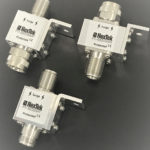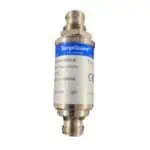News & Events
November 24, 2015
Featured Transient Threat Type/Application: Static [ESD] Protection for Coaxial RF Lines
Today’s post highlights a type of Transient Threat that NexTek arrestors provide protection against. Although Lightning energy is the primary source of damage to coaxial lines and systems where they are used, there are also other types of Surge Energy that can cause damage to electronics.

For any application or system which uses coaxial transmission cables and connectors, there is likely to be some risk of direct human contact to an “exposed” (i.e. un-mated) coaxial center pin which in-turn makes ESD discharges directly onto the center pin quite likely. In this case, protection must be installed or afforded in order to ensure the continued performance of a given system or piece of equipment.
When examining a specific application and quantifying the ESD threat level, there are two main paths to travel down: One, the ESD threat may be given by a specific Industry Standard document (MIL-STD, IEC, IEEE, EN, etc) according to a judgement made upstream in the overall program…or an approximate threat level or desired protection level based on the program-level design requirements.
See below for a table which lists some ESD Requirements which may apply:
Standards that require ESD testing include:
- ISO 10605
- Ford EMC
- ISO/EN 61000-4-2 needed for the CE mark
- IEC 61000-4-2
- ISO TR10605
- MIL-STD-883
- MIL-STD-1512
- GR-78-CORE
- RTCA DO 160
Learn More about Electro-Static Discharge here: Threat Type Page – Electro Static Discharge
Learn More about NexTek’s Coaxial Surge Arrestors here: Coaxial Surge Arrestors
Get A Free Quote
Or Call 978-486-0582




